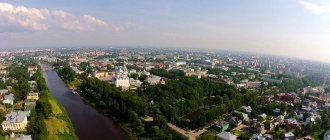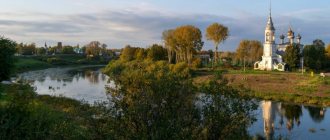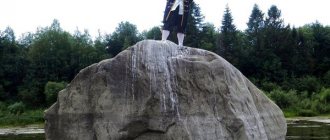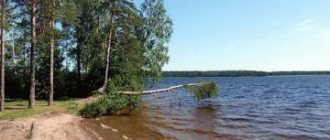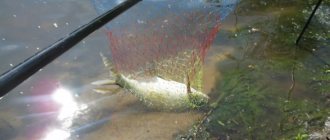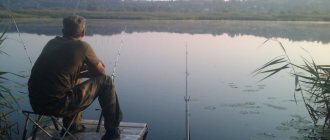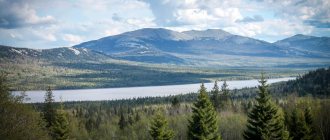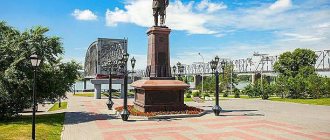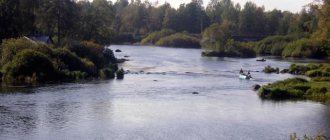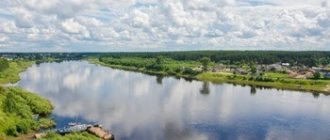Lake Vozhe, a photo of which is presented in the article, is located near the border between the Vologda and Arkhangelsk regions. It belongs to the Onega River basin. Elongated in the direction from north to south. The length of the reservoir is 64 km, its width ranges from 7 to 16 km, and its total area is 422 square meters. km. The depth of Lake Vozhe is small, so it is considered shallow. Its average value does not exceed 1-2 m, but there are also places where the bottom deepens to a distance of up to 5 m.
Features of the reservoir
About twenty rivers flow into the lake, the largest of them are the Modlona (38% of the incoming water), flowing from the south, and the Vozhega (34%), whose delta, consisting of three channels, is located in the east. The flow is carried out in the north, through the Svid watercourse, which flows into Lache, from which Onega takes its source.
Lake Vozhe (Vologda region) is located on the wide Vozhe-Lachskaya lacustrine-glacial lowland, and its area belongs to the middle taiga landscape type. The banks are flat, overgrown with reeds, and the area around is very swampy.
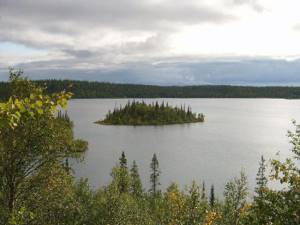
Features of the reservoir
Lake Vozhe stretches from south to north. The reservoir has an almost oval shape. The north side is wider than the south. The drainage basin area is 626,000 hectares. The source belongs to the Onega River basin.
About 20 large and small rivers flow into this reservoir. The largest of them are Modlona, Vozhega, Pustaya, Wondoga, Eloma, Cheptsa. The Modlona River is the largest tributary of the lake. The source receives about 35–40% of the incoming water from it. This river flows into a bay on the southern shore of the lake. The Vozhega River brings 30–35% of the water.
The Svid River flows out to the north of the source. It flows into Lake Lacha in the Arkhangelsk region. The Onega River originates from this reservoir.
The coastal strip of the water area is flat; there are no steep cliffs leading into the water. Almost the entire coast is swampy, reeds and other aquatic plant species grow. On the western side there are small areas of terrain made of sand and stone.
This reservoir is considered the cleanest within the Vologda region. Around the lake there is a forest belt of coniferous plants, among which there are junipers 15 meters in height. Berries and mushrooms grow here. The forests are inhabited by white-tailed eagle, honey buzzard, and buzzard. The swampy area is inhabited by swan, loon, and partridge.
The beginning of ancient history
The first settlers settled on the shores of the lake in the 7th-6th millennia BC. e. Neolithic settlements of the 4th-3rd centuries were explored in the 1930-1950s. At that time, in the surrounding forests that surrounded Lake Vozhe, the vegetation was dominated by oak, linden, elm, hazel, and the large fauna, in addition to modern bears, moose, wild boars and badgers, was represented by reindeer, red deer, roe deer and aurochs.
Relict elms in the Vozhega delta still exist as the last remnant of ancient broad-leaved forests. The ancient ichthyofauna, which included sterlet, asp, catfish, blue bream and rudd, has disappeared by our time.
History of Lake Vozhe
The history of Vozhe began approximately 700 million years ago, at that time the sea was formed and then disappeared on its territory. Then the glaciers “came” here, and then more than once melted. One of the last such periods ended approximately fifteen thousand years ago, it was associated with climate warming. The lake took on its modern appearance 6 thousand years after the melting of the last glacier. Modern Lake Vozhe is essentially a residual reservoir from the previous post-glacial one.
In these places, sites of ancient people from the Neolithic and Iron Ages were found. People chose to live on high ground on the shores of the lake, above the Tordoxa River.
Russian people settled in the Vozhe region in the 11th and 12th centuries. This happened simultaneously, from the Novgorod Republic and the Rostov-Suzdal land. In the 14th-15th centuries. the settlement process intensified. This was connected with the emergence of the monasteries of Northern Thebaid, which became centers of trade, agriculture and industry.
In 1472, the Vozhezersky Monastery was founded on Spas Island, located in the middle of the lake. It is its ruins that can still be seen today.
Currently, due to the fact that the places here are inaccessible in terms of travel, there are only a few villages located along the shores of the lakes, with a small number of people. The largest are the villages of Vasilyevskoye, Sidorovo and Charonda. In 2015, the last resident of Charonda died.
Interesting fact: there are still relict elms in the Vozhega delta. This is the last remnant of ancient, broad-leaved forests. But the ancient ichthyofauna, unfortunately, has disappeared by our time.
“What’s in your name?”
In historical times, the region was inhabited by Finno-Ugric tribes, to whom Lake Vozhe owes its name. In the Komi language, “vozh” means “branch.” The Vozhega River got its name because it flows into the reservoir in three streams, and the lake was named after this watercourse.
Traditionally, local Russian residents called the lake Charonda, after the name of the only city located on its shore - Charonda. It was once a rich settlement, the center of the Charozersk volost. But after the restriction under Peter I of international trade through the Arkhangelsk port and the decline of the route from Belozersk to Pomorie in 1776, it lost its city status.
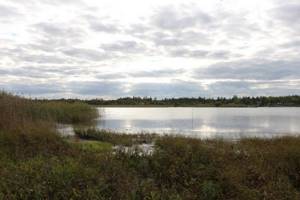
Use of Lake Vozhe
Agriculture in this area has always been underdeveloped. But fishing on Lake Vozhe is a common thing. It can be called the main occupation and trade of local residents. The reservoir is rich in roach, perch, pike, ide, bream and ruff. People who love to spend time with a fishing rod often visit this lake, despite the inaccessibility due to the lack of good roads in this sparsely populated area. Whitefish, burbot, and grayling are found in the northern part of the lake. A total of 15 species of fish have now been discovered, not counting salmon and nelma that sometimes enter this water area.
The level of industrial fishing on the lake experienced significant fluctuations in the 20th century. In 1893, 1,580 tons of fish were caught here, in 1902 - 800 tons, and subsequently the catches continued to decline. By 1913, there were about 600 anglers on the lake on a permanent basis in the summer and 300 in the winter. But after 50-60 years, the staff had to be reduced, and by 1973 there was only one collective farm with twenty fishermen left.

The minimum catches were during the collectivization period in 1930 (80 tons) and in 1982 (95 tons). Currently, the catch that can be obtained from the lake is 200 tons per year.
Since the 1950s, fish conservation measures have been carried out on the reservoir for 20 years. Until the middle of the century, half of the catch was ruff, then they stopped catching it, switching to bream. Since 1987, they have been trying to acclimatize pike perch in Vozha.
Fishing on Lake Vozhe
Fishing is carried out in the waters of this source. The reservoir is known for its rich ichthyofauna. There are a lot of fish in Lake Vozhe. The predominant species are pike, pike perch, perch, bream, and ide. In the north of the reservoir you can catch whitefish, burbot, and grayling. Local residents say that sometimes salmon and nelma were caught here, which came here from the White Sea.
Previously, rudd and vendace were found in the Vozhe waters, but pike perch gradually replaced these fish species. From the side of Spassky Island, pike perch fishing is prohibited, as this species spawns here. There is a ban on trolling in the reservoir, and poaching is suppressed.
According to reviews from local residents, the best time to bite is in early autumn - September and October. Perch and bream go well with live bait. Pike and pike perch can be caught weighing about 2 kilograms, and perch in the region of 500 grams.
Where small rivers and streams flow into the lake you can catch bleak. This fish bites well from any depth throughout the summer. At the mouth of large rivers there is a good catch for roach and bream. In the area of the Modlona and Elona rivers, fishing for pike, pike perch, perch, carp, and ide is developed. You can only get to these places by boat, since the coastal strip here is inaccessible.
There is a fishing base on Lake Vozhe in the Vologda region. Here you can rent housing, a boat with or without a motor. Experienced huntsmen will show you proven fishing spots. This fishing base is located 10 kilometers from the village of Nizhnyaya, not far from the confluence of the Vozhega River into the lake.
© travelbeard
Flora and fauna
Lake Vozhe has a fairly diverse flora. 38 plant species were found in the reservoir, among which the most predominant is reed. In the forests along the Ukma River there are tree-like junipers up to 15 meters high. In the vicinity of Vozhe, a relatively rare taiga liana grows and there are orchids listed in the Red Book - calypso and lady's slipper.
In the 20th century, representatives of the beaver family, which were once completely exterminated by local residents, were reacclimatized here.
Forests cover much of the lake's surroundings. They are home to such birds as the white-tailed eagle, greater spotted eagle, honey buzzard, and buzzard. The swamps are home to swans, black-throated and red-throated loons, partridges and curlews.
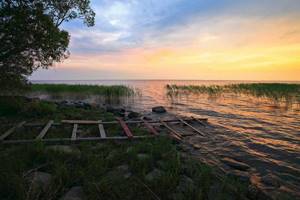
Ecological problems
Lake Vozhe is currently not in the most favorable ecological situation, which raises concerns among experts. This reservoir is located 150 km from the largest industrial center of the Vologda region - the city of Cherepovets. Its industrial emissions reach the water area with air currents and settle in large quantities in the lake due to the combination of the significant width of the water surface with extreme shallowness.
The shores of Vozhe are increasingly blooming with blue-green algae, the diversity of zooplankton is decreasing, and the content of heavy metal compounds in fish is approaching the levels of the more polluted Beloe and Kubenskoye lakes.
Lake Vozhe
Perhaps someone will think that this report contains a lot of water and unnecessary things that are not related to fishing, but let me make an entry in blog style.
I'll start in order: with how it all began.
A colleague approached me at work (I repeat: I am a military senior lieutenant) and offered to go fishing in the Vologda region for 5-7 days. A group of 5-6 people was needed: this was due to the size of the house and the desire to save on boat rentals. Let me get ahead of myself: it is possible to accommodate more people, but it will be crowded.
After the group was completed and the details were agreed upon (it seems that one of our initiators even met with the organizer in Moscow and personally discussed this trip.)
We set out from the Moscow region (Direction: Kaluga Highway) at 6 am to avoid traffic jams on Yaroslavka. We drove in two cars: 12 and 11: three people rode in 12, and two in 11, but in 11 we carried a three-seater rubber boat and a four-horsepower Yamaha engine. Food, things and gear were evenly distributed among two cars.
About the road: 70 km from Moscow there is a road with two lanes in each direction. In the Vladimir and Yaroslavl regions there is one lane. There are not many cars, but the trucks were loaded with half-dead KamAZ trucks. Outside Yaroslavl, the number of cars has greatly decreased.
We were in Vologda around one o'clock in the afternoon. Then we drove around Vologda along the ring road and headed towards Arkhangelsk. After 20-25 km we turned to the town of Sokol (there is a sign there), after which a road of tolerable quality began (I’ve seen worse) with virtually no cars.
We arrived in Vozhega around four in the evening, where they were already waiting for us.
At the entrance to Vozhega we bought gasoline (we took 70 liters) and headed towards the village of Nizhnyaya. From Vozhega to Nizhnyaya there are 60 kilometers, half of which are dirt roads (the average speed on a dirt road is around 60)
At the beginning of five we were at the Vozhega River in the village of Nizhnyaya. 2 boats were waiting for us. We loaded our things, gear, boat and food and moved to the lake.
When we arrived at the place, while we were unloading, it was already getting dark. settled in a log house covered with clapboards. The owner started a gasoline power plant: light appeared. There was no TV at that time (we were in September), but we didn’t need it. Cell phones were charged: the Moscow megaphone was confidently picking up (I’m talking to myself)
2nd day
In the morning the owner of the house woke us up and after a light breakfast he took us to show us the lake - there is something to see: the lake is not small: the length is about 60 km, and the width is on average 10 km. If you don’t know where to swim on rubber, you can tear the bottom: there are rocks.
As I already said: we had a rubber boat with us, but we arrived in the fall and there was a wave, so we didn’t climb into the lake on it, but took it from the owner of the house: he had a Sarepta (Yamaha-40), there was another boat, Crimea (Whirlwind-30), but we decided to use our boat (the budget is not rubber): two of ours did not go to the lake, but went to the rivers, of which there are quite a few in the place where we were fishing. Total: three of us and the owner rushed to Spas Island (I’ll say on my own, this is not a shitty island 12 km from the camp), two of us went to the Kera River (I went to the river on the first day).
I don’t know what exactly they were doing at the rescue and on the lake, I’ll tell you about myself: before sailing and after the briefing, the owner of the house told me what and where you can catch. When we entered the river, we dabbled a little in trolling (may my colleagues forgive me, who are alien and disgusted by this method of fishing), when we walked a couple of kilometers up the river, stopped and started fishing with a spinning rod. but they often changed their parking place and moved a lot - they did reconnaissance.... To my joy, I can report that the predator in those parts is not afraid and takes everything that shines and moves.
We caught several pikes (weighing from 1 kg to 3 kg) and a dozen perches with an average weight of 400-600 grams.
We returned at about 3 o’clock because we had agreed that we would do the kitchen: it was a bummer, but we had to cook ourselves: there was a stove and dishes, but there was no one to cook for food, and I didn’t want to eat homeless packages after working up an appetite.
An hour later, those who went to the island returned: unlike us, they caught pike perch: five fish weighing up to 2 kg.
While eating and lubricating the liver with life-giving water (purely symbolically), we decided to move our entire personnel to the island tomorrow.
Around 5 pm it started to rain, so plans to swim on the lake not far from the camp were ruined. I had a guitar with me: they sang songs by Shevchuk, Tsoi, Galanin.
3rd day
The owner warned us that he would not be there today, but he would send his friend: therefore, it was decided to sleep for about 8 hours, then move closer to the rivers, and after lunch we would all take a ride to the island together on two boats.
Around 12 o'clock the owner's friend Andrei showed up and we immediately headed to the island without stopping at the camp. The weather was normal: the sun was shining and there was no wind. So, we reached the island in half an hour.
Late in the evening we returned to camp. Before going to bed, we collected our things. In the morning at about 9 o'clock we boarded the boats and said goodbye to the owner in the village and set off for Moscow.
I’ll also add on my own behalf: in the spring I go there again, because I’m not a very big fan of freezing on ice, but there are connoisseurs who come in winter: the house is warm, there is a stove.
I quote the owner’s words: one of our guys asked him about winter.
From the attic, through binoculars, you can examine the catch of your “competitors” and decide where to move.
In December-January, burbot goes well on the girders, plus pike perch, pike, and perch.
Sometimes it’s even very good for balancer perch and pike perch: you need to get into the weather and the place. Well, it’s a good sorog for a fishing rod.
You can ask the locals about pits, etc. to have a rough plan: where to go, where to go.
And now the photo report:
House(1 photo)
Spas Island(2 photos)
Fishing place: cane moss around the island: (3 photos)
No comments:(4 and 5 photos)
If you have any questions, write.
